Noshikomi udon is a rustic and warming noodle dish from Japan. Unlike the typical slick and chewy udon often found in restaurants, this version is a hearty meal in a single pot, filled with thick, flat noodles and various vegetables. It’s a dish deeply connected to its origins in the Okutama region of Tokyo. It holds a special place as a beloved home-cooked meal. This article will give you a closer look at what makes this dish so unique and how it came to be a local favorite.
What is Noshikomi Udon?
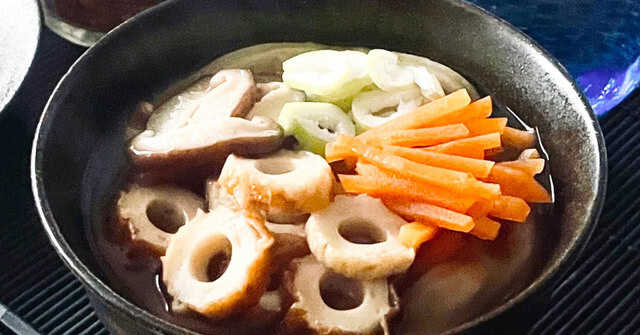
Noshikomi udon is a type of hot pot udon. It is a simple yet filling dish where wide, flat noodles simmered directly in a miso-flavored or soy sauce-based broth. The name “Noshikomi” comes from the verb “nosu” (のす), which means to stretch or flatten the dough. The noodles are known for being thick and firm, providing a satisfying, chewy texture.
Common ingredients cooked alongside the noodles include local vegetables like daikon radish, carrots, potatoes, taro, shiitake mushrooms, and green onions. Fried tofu (abura-age) is also a classic addition. The entire dish is cooked together in a large pot. This allows the noodles and ingredients to absorb the rich flavors of the broth. Thus, creating a comforting and flavorful meal, especially during colder seasons.
The History of Noshikomi Udon
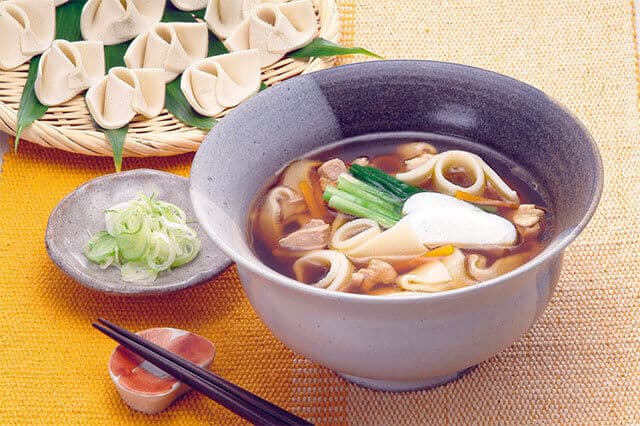
Noshikomi udon is a traditional dish from the mountainous Okutama region of Tokyo. Its history is tied to the area’s geography, where the terrain made it difficult to grow rice. As a result, the local population relied on wheat flour for their daily meals. Noshikomi udon became a staple for farmers and forestry workers returning from a long day’s work in the cold mountains. Furthermore, this dish was easy to prepare, and its hearty nature provided the energy needed after strenuous labor.
Because it was a meal for the home and for workers, cooks did not create it in a refined way. They cut the noodles roughly and added whatever seasonal vegetables were available to the pot. This simple, no-fuss approach is central to its character. While families have made it for generations, it remains a dish that people primarily cook and enjoy at home, passing it down through families as a taste of the region’s heritage.
A Look at Restaurant for Noshikomi Udon
Tatsumi (辰巳)

Noshikomi udon is traditionally a home-cooked dish and is not commonly found in restaurants. However, if you are in the Okutama area and want to experience the local food culture, a great place to visit is Tatsumi. While it doesn’t serve noshikomi udon, it is a well-known local eatery that serves various traditional noodle dishes and other Okutama specialties that give you a feel for the local cuisine. It offers a cozy, traditional atmosphere where you can taste the flavors of the region.
Conclusion
Noshikomi udon is a testament to how practical needs can create a lasting and cherished food tradition. It is more than just a dish; it is a warm and inviting piece of the Okutama region’s history, embodying the spirit of community and resilience. Its simple preparation and heartwarming taste have made it a favorite for generations, keeping the legacy of this local specialty alive in the kitchens of families throughout the area.
If you enjoy the rustic, hearty nature of Noshikomi udon, you might also like to try other similar dishes. These include the hot pot favorite Nabeyaki Udon, or the well-known Hōtō noodles from Yamanashi Prefecture. Thus, each offers a unique take on the comforting tradition of a noodle hot pot, providing a perfect meal to share with family and friends.
FAQ
What is Noshikomi udon?
Noshikomi udon is a regional style of udon where the dough is kneaded and rested (noshikomi) to create thick, chewy noodles.
Where does Noshikomi udon come from?
It is associated with northern and rural areas of Japan, particularly parts of the Tohoku region.
How are the noodles different from regular udon?
The resting and kneading process makes them denser and chewier than standard udon noodles.
How is Noshikomi udon usually served?
Often served in a warm soy- or miso-based broth with local vegetables, mushrooms, and sometimes meat.
Is it a winter dish?
Yes. Its hearty texture and warm broth make it especially popular in colder months.
Can I find it in major cities?
It is most common in its home regions; in large cities you may find it at specialty regional restaurants or festivals.
Can I buy dried or fresh Noshikomi udon to take home?
Some local shops sell dried or fresh noodles you can take home and cook, so look for local producers or souvenir shops.
How do I cook Noshikomi udon at home?
Boil the noodles until chewy, drain, and serve in a hot broth with your preferred toppings.
Are the noodles made with any special ingredients?
No special ingredients are required—typically just wheat flour, water, and salt; the technique creates the texture.
Is Noshikomi udon suitable for vegetarians?
The noodles themselves are vegetarian, but broths may contain fish stock (dashi), so confirm when ordering.
What toppings pair well with it?
Root vegetables, mushrooms, green onions, and tempura or local meats are common complements.
Any tips for travelers wanting to try it?
Visit regional eateries in winter, ask locals for recommended shops, and try it with simple broth to appreciate the noodle texture.
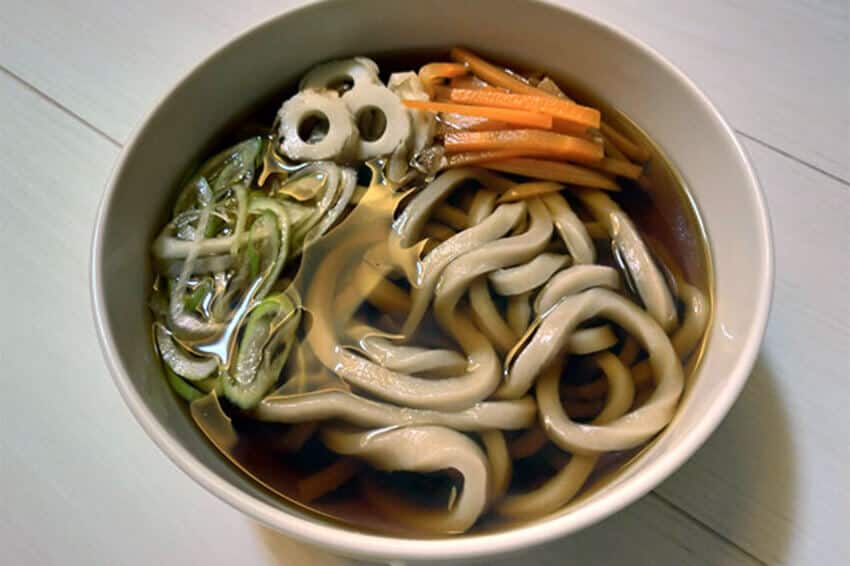
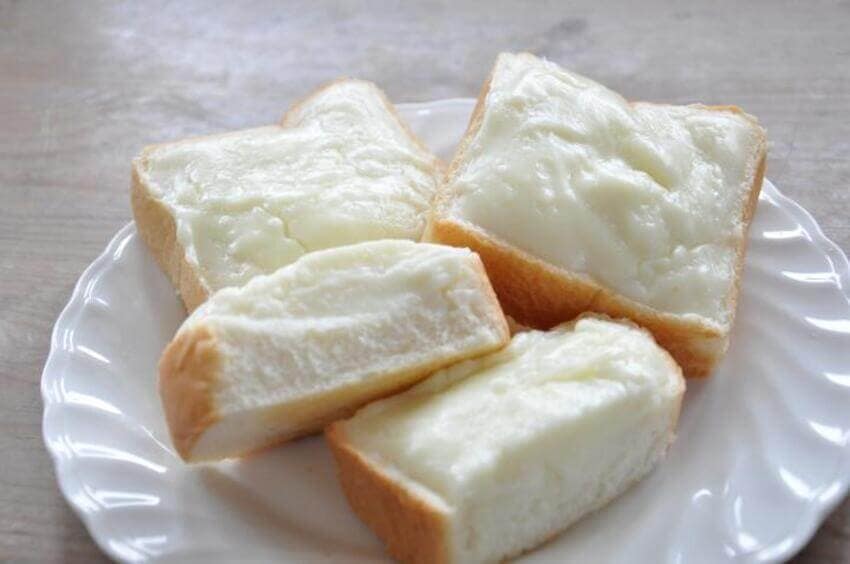


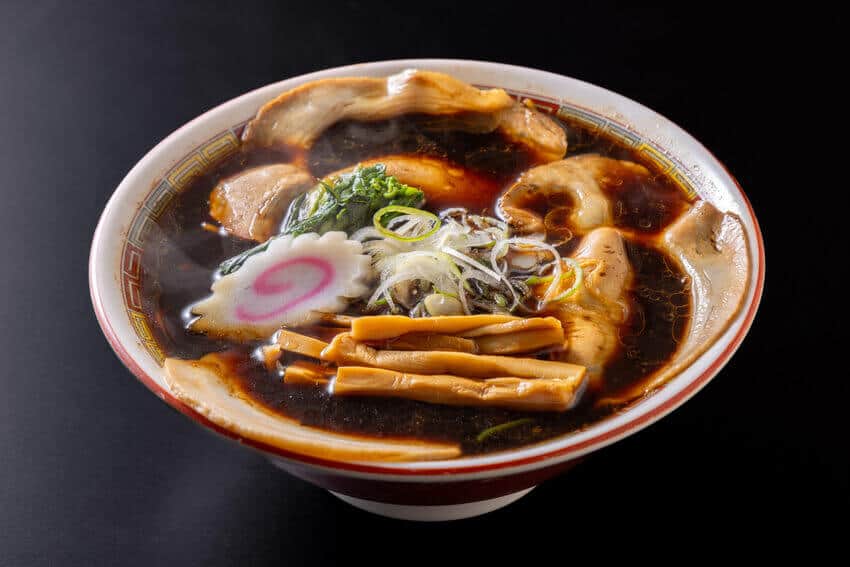

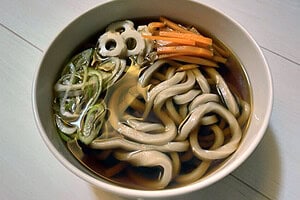


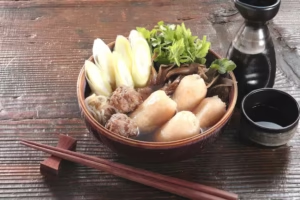
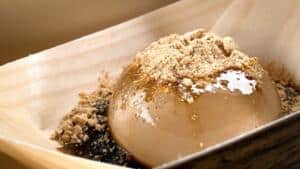

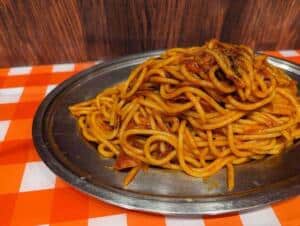


Comments